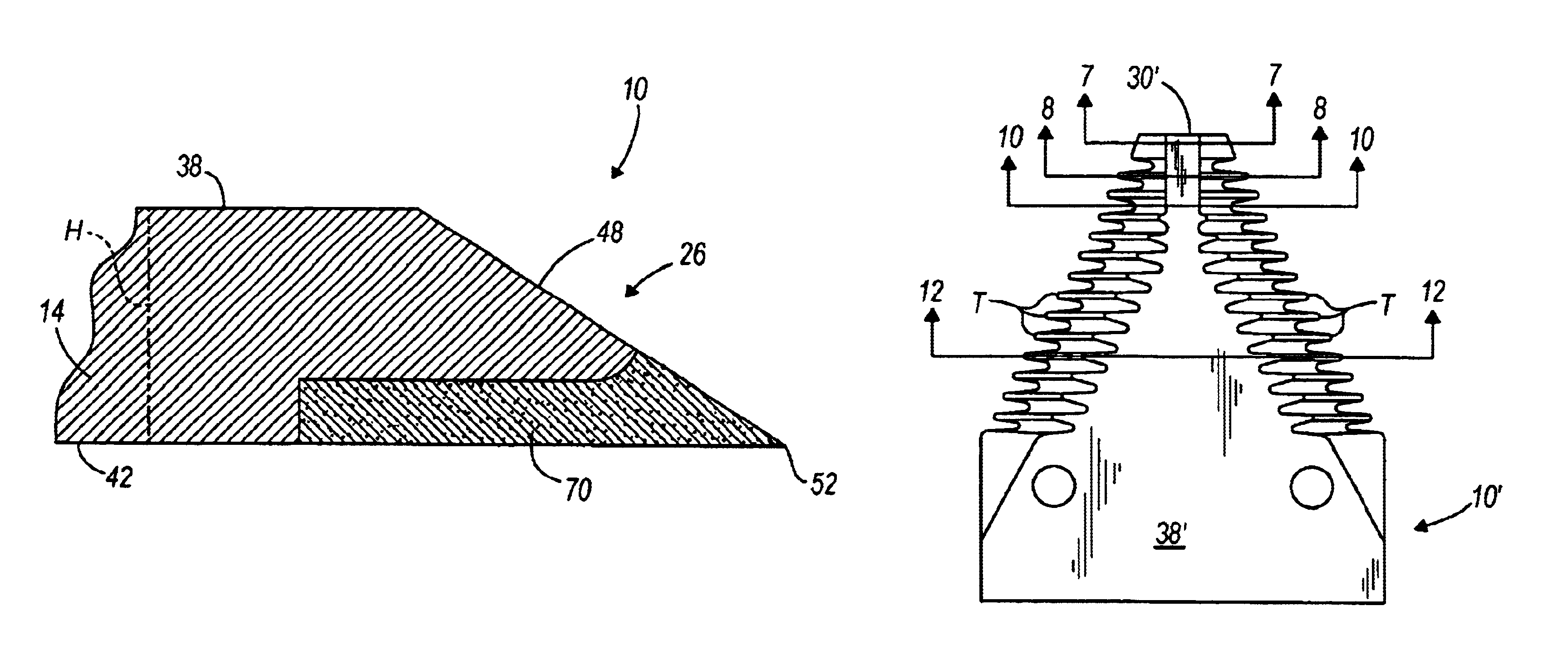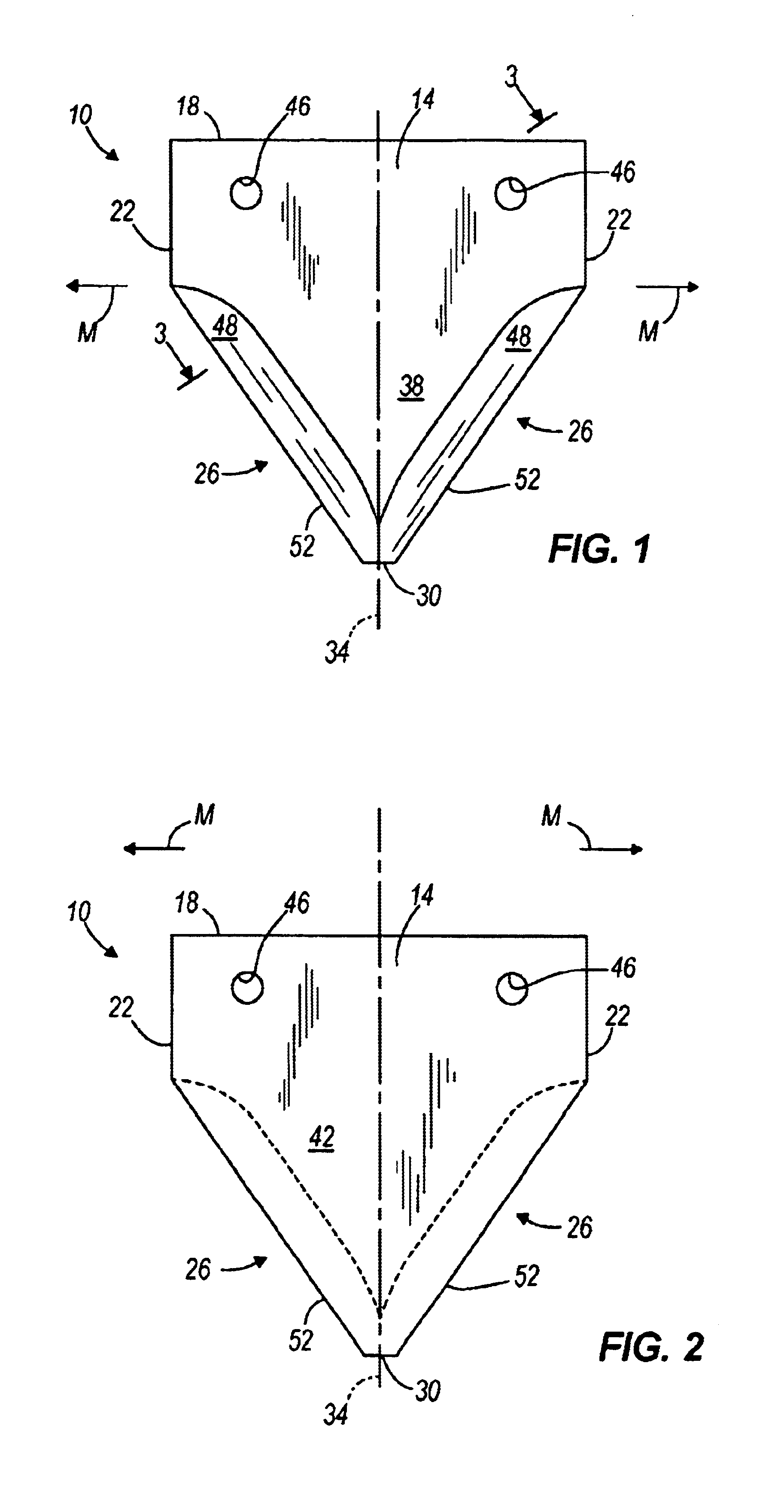Reciprocating cutting blade having laser-hardened cutting edges and a method for making the same with a laser
a cutting edge and laser technology, applied in the direction of manufacturing tools, furnaces, heat treatment equipment, etc., can solve the problems of inability to crack, and inability to withstand impact loading, so as to and reduce the occurrence of hydrogen embrittlemen
- Summary
- Abstract
- Description
- Claims
- Application Information
AI Technical Summary
Benefits of technology
Problems solved by technology
Method used
Image
Examples
Embodiment Construction
The Work Piece
FIGS. 1-4 illustrate a metal work piece, such as a reciprocating sickle type cutting blade or section 10, which can be hardened through the application of a laser beam to portions of the sickle section 10. In the illustrated embodiment, the sickle section 10 is substantially triangular in shape and includes a body 14 defined by a first or rear edge 18 and laterally spaced second or side edges 22 that intersect the rear edge 18 and are substantially normal to the rear edge 18. Working portions 26 extend from the spaced side edges 22 and intersect at a blade tip or apex 30. A longitudinal axis 34 passes through the apex 30 and extends toward and is substantially normal to the rear edge 18. In the illustrated embodiment, the working portions 26 are in substantially mirrored relationship to one another with respect to the longitudinal axis 34, and each working portion 26 is angled (i.e., not parallel) relative to the longitudinal axis 34.
The body 14 further includes a top ...
PUM
| Property | Measurement | Unit |
|---|---|---|
| Angle | aaaaa | aaaaa |
| Depth | aaaaa | aaaaa |
| Distance | aaaaa | aaaaa |
Abstract
Description
Claims
Application Information
 Login to View More
Login to View More - R&D
- Intellectual Property
- Life Sciences
- Materials
- Tech Scout
- Unparalleled Data Quality
- Higher Quality Content
- 60% Fewer Hallucinations
Browse by: Latest US Patents, China's latest patents, Technical Efficacy Thesaurus, Application Domain, Technology Topic, Popular Technical Reports.
© 2025 PatSnap. All rights reserved.Legal|Privacy policy|Modern Slavery Act Transparency Statement|Sitemap|About US| Contact US: help@patsnap.com



